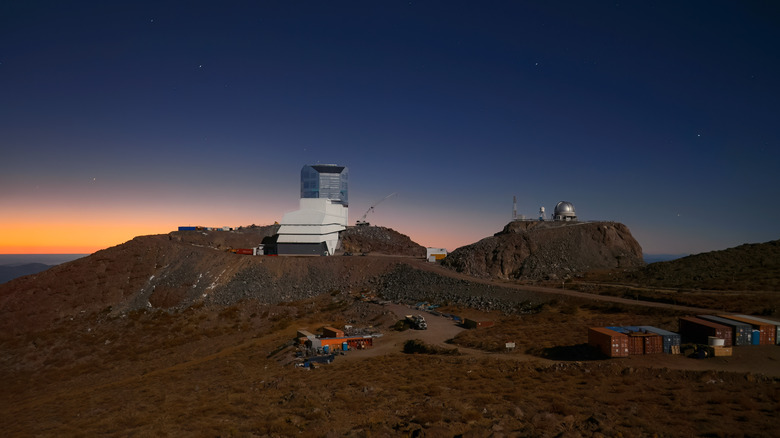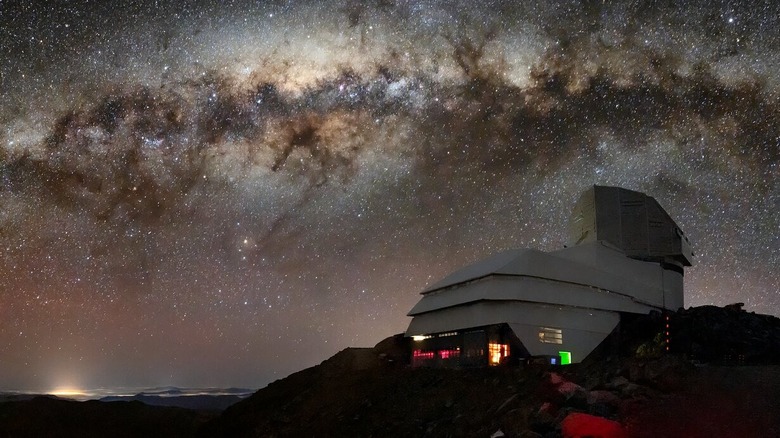This New Observatory Could Redefine Everything We Know About Dark Matter
One of the biggest questions in astronomy today is about something we can't see: dark matter. Scientists know that there must be something in the universe which has mass — and a lot of it — because of the way that galaxies move. However, they don't know what this substance is and have never been able to detect it directly. This hypothetical material is called dark matter, and the nature of it is something scientists have been pondering since it was first theorized in the 1930s.
The difficulty is that dark matter seems to not react to light, so it is impossible to see. However, it can still be measured by looking at its gravitational effects on large objects like galaxies. But extremely accurate and large-scale measurements are required to pick up on this effect.
Soon, the hunt for dark matter will have a brand-new instrument. The Vera C. Rubin Observatory, named after the woman who discovered the first evidence of dark matter, is currently under construction and will come online in 2025. When it does, it could give a whole new view on the dark matter problem.
As well as dark matter, it will also study dark energy, an equally mysterious force which contributes to the expansion of the universe. "You can think of dark matter as trying to build the cosmic structures, while dark energy is actually trying to dilute them and push them apart," explains Andrés Alejandro Plazas Malagón, Rubin Operations Scientist at SLAC National Laboratory.
How to observe the invisible
The Rubin Observatory, located in Chile, will scan the sky to perform a survey called the Legacy Survey of Space and Time (LSST). This huge survey will collect an enormous amount of data about galaxies to work out where the "missing mass" or dark matter of the universe resides.
It will do this using a technique called gravitational lensing. When an object has enough mass, it actually bends spacetime so that light coming from behind the object is bent in a distinctive manner. By seeing how strong this lensing effect is, scientists can figure out how much mass the lensing object has. That means they can compare the mass in a galaxy which they can see to the mass it must have according to its lensing effect, and the difference between those two indicates how much dark matter is present.
This effect is subtle, however, so to get a sense of how much dark matter is out there, scientists need data from thousands of galaxies. They want to observe systems across the entire sky to get a picture of all the dark matter that's out there.
For this, the Rubin Observatory needs a very powerful telescope, with both a wide field of view (meaning it can see large portions of the sky at once) and high resolution (meaning it sees those areas in great detail). Most telescopes have one or the other. The Hubble Space Telescope, for example, has very high resolution but a small field of view. Rubin will be able to have both because it has an extremely large 8.4-meter mirror which is hooked up to the largest digital camera in the world.
Dark matter and more
Rubin won't only be used to look for dark matter and to study dark energy though. While it performs its sky survey, it will also collect data on a wide range of other objects that will be exciting for astronomers. This includes what are called transient events, or things which happen quickly in astronomical terms, such as the explosions of massive stars called supernovae.
Rubin will be able to detect supernovae because it will scan the sky frequently, so any changes will be quickly observed. That means it will be able to detect these short-lived events, then astronomers around the world can turn their telescopes toward them to investigate them quickly.
Over its 10-year survey, Rubin will be able to see these brief events as well as tracking how dark energy effects the expansion of the universe over time.
"With Rubin, we're going to have everything," said Plazas Malagón. "We're going to measure the properties of vastly more galaxies than what we have now, which is going to give us the statistical power to use weak lensing to both map the distribution of dark matter and study how dark energy evolves with time."
That means that the survey could confirm a current theory of dark matter and dark energy, or it could point to something completely new.
"Dark energy is a concept that fits with the accepted theory of gravity within Einstein's general theory of relativity," said Plazas Malagón, "but Rubin and the LSST will also allow us to explore alternatives to that, which is incredibly exciting as well.


